Not every resource in Starfield is worth the effort of building an Extractor to mine because some are so plentiful that you’ll be encountering them basically everywhere you go. Others are either super rare or otherwise just difficult to obtain, so you’ll want to get an Extractor set up as soon as possible for those ones.
In Starfield, resources are used in virtually every type of crafting—building Outposts, modding weapons and armor, crafting consumables, and even completing the research necessary to learn new crafting recipes. Thankfully, resources can be mined automatically after some setup at an Outpost, so you won’t have to spend all your time in search of components for crafting and building.
Here are the best resources to mine at Outposts in Starfield.
Criteria for choosing resources to mine in Starfield
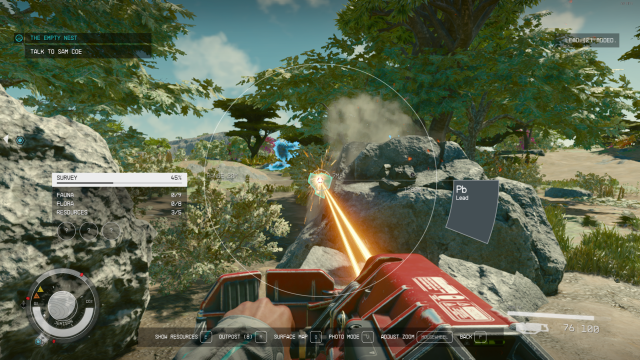
There are a couple of different ways you can approach resources to gauge which ones are most worth taking the time and effort to set up Resource Extractors. Personally, I look at only three things: weight, demand, and supply.
If a resource is very heavy, like Iron, I am much more likely to want a Resource Extractor. Not feeling like I need to stop and manually harvest every Iron Node I come across not only saves time but also inventory space and carrying capacity. if you’re manually harvesting Iron, you’re going to need a ton of pit stops.
Demand is my second biggest criterion. Aluminum is very light compared to Iron, so it’s less likely to cause encumbrance. Aluminum is also needed in plenty of crafting recipes, including Outpost building and most weapon mods. That means I either have to feel guilty every time I pass by an Aluminum Node without harvesting it, or I need an Aluminum Extractor so I don’t have to harvest manually. Easy choice.
Finally, supply. If a Resource isn’t very heavy and isn’t in super high demand, it still is worth mining for if it’s very rare or otherwise difficult to obtain—for example, Chlorine. While Chlorine can technically be found in Nodes like Iron or Aluminum, fate never seems to allow it for me personally. What I do find often is areas in which there is Chlorine in a liquid or gas form within the planet’s surface, and the only way it can be harvested from the ground is with an Extractor.
Starfield: The most important resources to mine
Some resources are more valuable and rarer than others, but for starting out, there are other objective good choices of resources that you’ll want to have Extractors for no matter what.
Iron (Fe)
Iron is used in almost everything you can build or craft in Starfield. It is the primary resource for all buildings, and you will never stop needing it for just about anything in the universe.
Where to find Iron to mine
Luckily, Iron is widely available in Starfield. You shouldn’t have a difficult time finding a planet with Iron on it. Scan any planet or moon and look for the symbol Fe, which is the periodic table name for Iron.

Here are some of the best Iron-mining planets andmoons near major cities in the most convenient star systems. You’ll have to make sure you’re in an area on the planet that has Iron nearby—simply being on a planet with Iron somewhere isn’t enough. It must be close to your Outpost, or you won’t be able to mine it. When placing a new Outpost, you will see a list of available resources at the top left of your screen.
- Zamka (moon of Olivas): Alpha Centauri System (New Atlantis)
- This moon not only has tons of Iron on it, but it also has Nickel, Water, Helium-3, Copper, Uranium, Cobalt, and Vanadium. Build an outpost on this moon. Just do it. The Alpha Centauri System is near the Sol and Cheyanne Systems.
- Codos (moon of Akila): Cheyenne System (Akila City)
- This is my favorite moon in all of Starfield. It has eight resources available for harvesting, most notably Iron, Aluminum, and Chlorine. Even better, it has low gravity, so you can bounce around to your heart’s content. The Cheyanne System is near the Sol and Narion Systems.
Aluminum (Al)
Aluminum is just about tied with Iron as the single best resource to mine in Starfield. The only argument that could be made for Iron taking the number one spot is the fact that Aluminum is lighter, meaning it won’t swamp your inventory quite as much. In terms of demand, they’re equal.
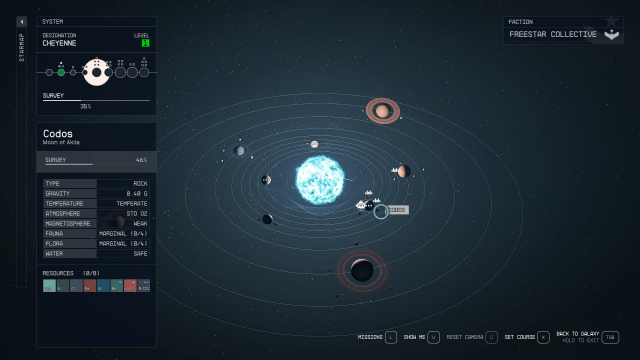
Where to find Aluminum to mine
Here are some of the best spots to build an Outpost to set up an Aluminum Extractor. Make sure you build an Outpost near Aluminum deposits—simply being on the right planet or moon does not guarantee the possibility of mining; you must be near the resource you want to extract.
- Codos (moon of Akila): Cheyenne System (Akila City)
- This is the best option for mining Aluminum in all of Starfield. Not only is it right next to Akila City, but it also has Iron and Chlorine—two other resources you’ll want to be mining for. What’s more, the moon itself is downright beautiful. The Cheyanne System is near the Sol and Narion Systems.
- Andraphon (Moon of Sumati: Narion System (Freestar Collective)
- This moon boasts a temperate climate, very low gravity, and several of the most needed resources, including Aluminum and Iron. The Narion System is near the Cheyanne and Maheo Systems.
Tungsten (W)
Tungsten is a much trickier resource to find than Iron or Aluminum and it is required for quite a few different Outpost-building upgrade options (including Resource Extractors in the first place).
Where to find Tungsten to mine
Thankfully, there is one fantastic option for mining Tungsten very early on in Starfield. You’re looking for the periodic symbol W (because why not). Remember that being on a planet or moon with Tungsten on it is not enough—you must be in close proximity to a Tungsten vein.
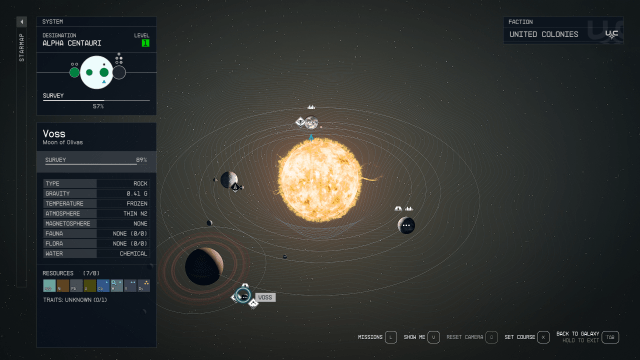
- Voss (Moon of Olivas): Alpha Centauri System (New Atlantis)
- This moon has eight resources available—most notably Tungsten and Copper. It’s very close to New Atlantis, meaning you can pop over for any supplies you may need and be back to your Outpost in a jiffy. The Alpha Centauri System is near the Sol and Cheyanne Systems.
Other important resources to mine
If you’ve completed the necessary steps to mine Iron, Aluminum, and Tungsten, then, by proxy, you’ve probably gained a decent enough understanding of how Starfield’s crafting system works, and you know what you want to mine next.
With that said, here are some great secondary targets to go for after the big three:
- Nickel (Ni)—used in many weapon mods
- Lead (Pb)—used for weapon/spacesuit mods
- Titanium (Ti)—used for Outpost building
- Copper (Cu)—used for Industrial crafting and power source crafting
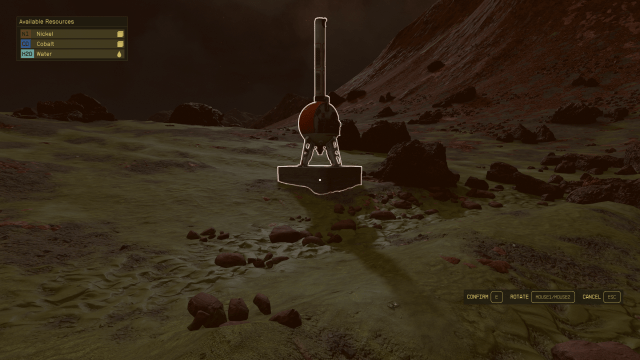
It is important to know that there is a maximum number of Outposts you can create. After seven, you’ll need to invest in the Planetary Habitation skill if you want to keep building more. Because of this, it really is important that you choose Outpost locations wisely—it is not simply about convenience or quality of life, location, and planning will have a genuine impact on the productivity of your Outposts.
How to mine resources in Starfield
Setting up a Resource or Mining Extractor seems intimidating, but it is actually super easy. All you have to do is build an Outpost, a relevant Extractor, and a Power Source.
You must first make sure you’re on a planet/moon that has the resources you require and that it’s habitable for building (not a Deep Freeze or Inferno planet). Once you’ve done that, you’ll want to Display Resources on the planet by pressing LB (Xbox) or R (PC) while still in orbit.
Displaying resources shows a color-coded resource map, so you can land your ship in an area that is guaranteed to have your desired resource by selecting the relevant color. After you’ve landed, build an Outpost, and then a Resource Extractor. If you lack the necessary resources to build an Extractor, you can track them by pressing X. Usually, they can all be purchased in any major city.
Extractors need to be powered, and most require five units of power to operate. In the Power tab of the Outpost building menu, you can see exactly how much power each source puts out. You do not need to connect the power source to the Extractor, this happens automatically. Extractors can be powered by multiple sources.
After that, you’re done on paper and can take resources directly from the Extractor as they become available. However, it is a good idea to build a Storage Container and link it to your Extractor by selecting Create Output Link after selecting Modify while highlighting the Extractor.
This Output Link causes resources to flow directly from the Extractor to the container, meaning that significantly more resources can be harvested before offloading is required. Finally, you can create a Cargo Link to pick up resources from an Outpost without even needing to land your ship, as well as an Outpost Link to pick up resources from multiple Outposts in one single stop. Efficiency is key, after all.


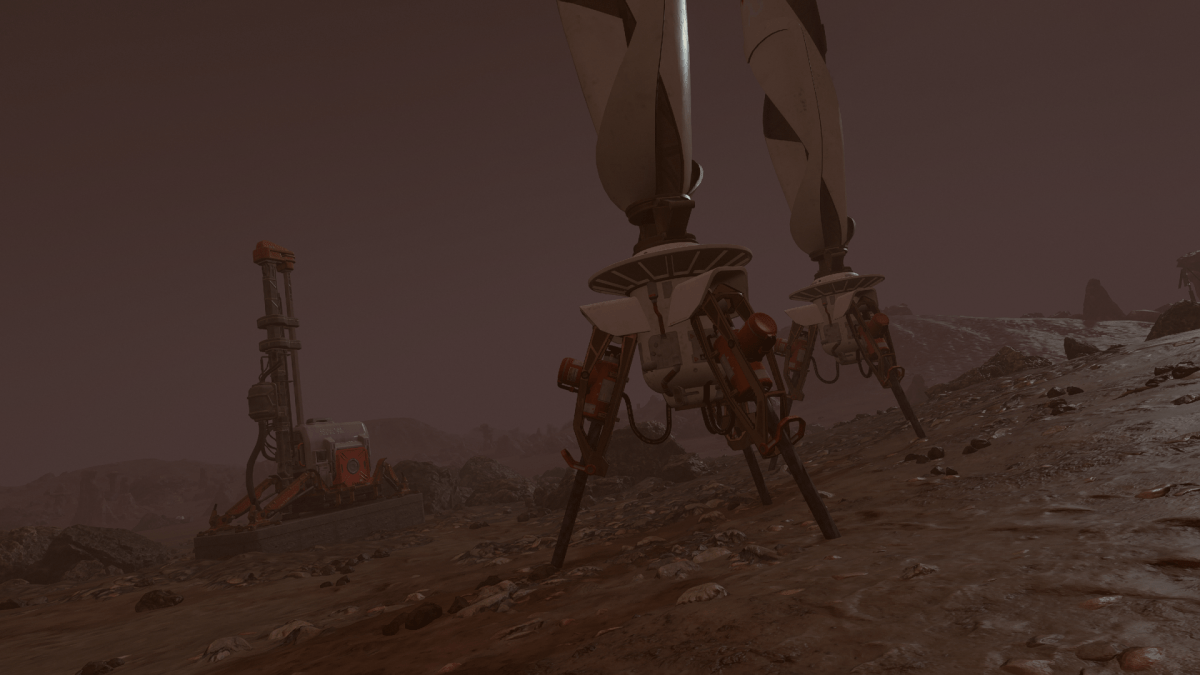

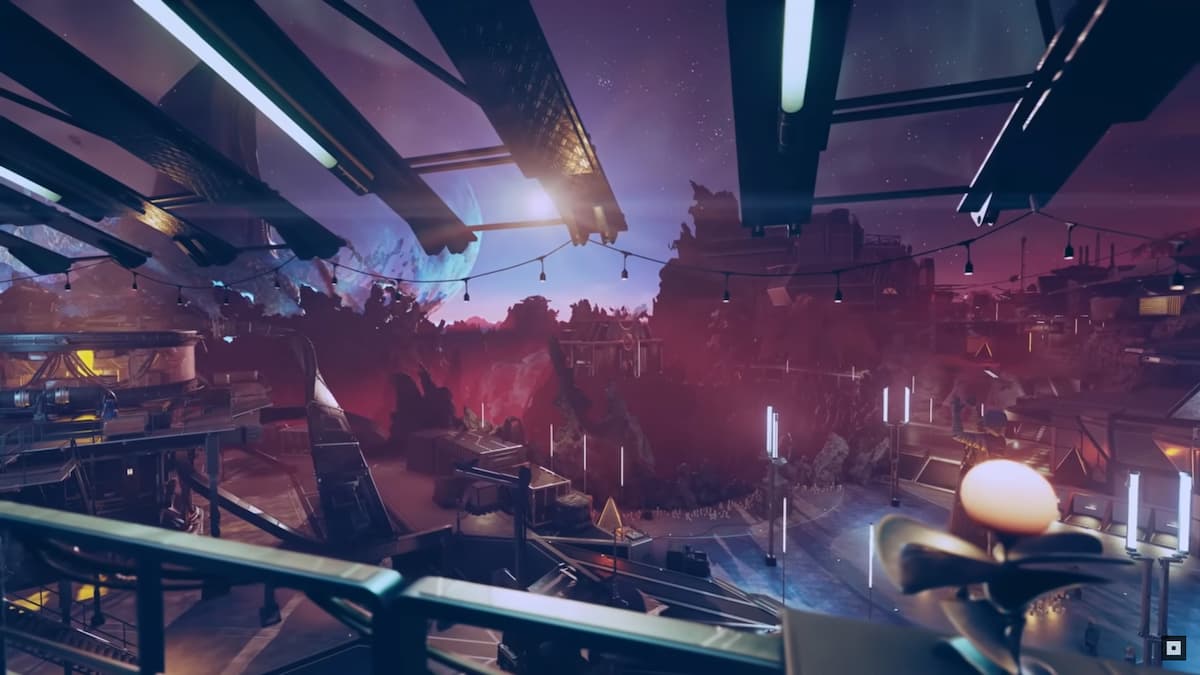
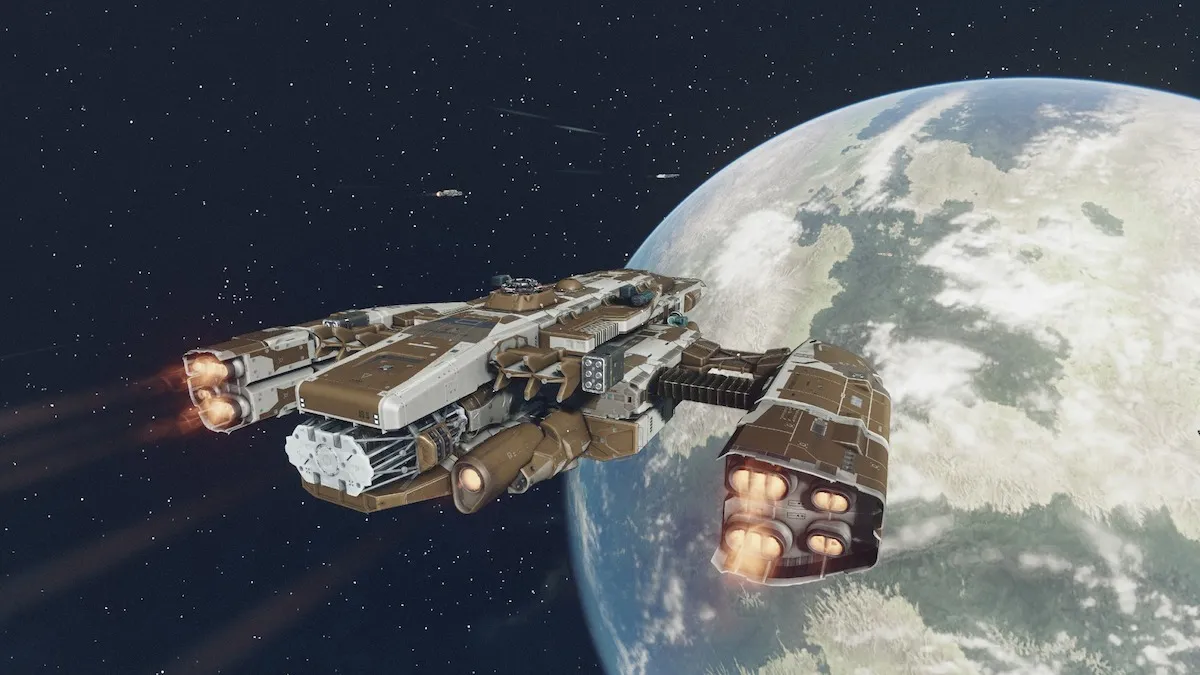


Published: Sep 13, 2023 12:00 pm